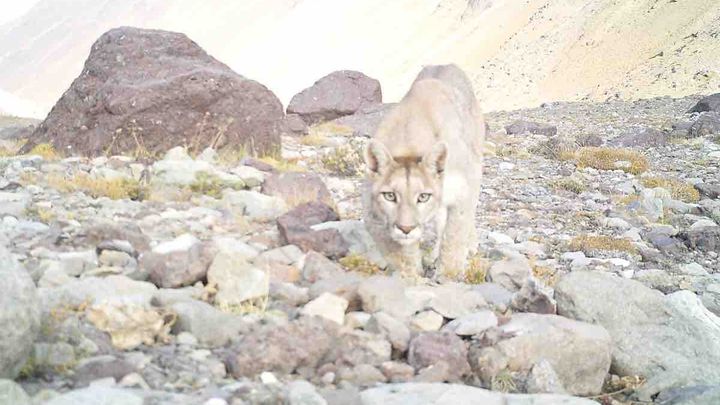
Proyecto Carnívoros Australes
Donation protected
Most puma (Puma concolor) research has been conducted in North America and existing studies in South America primarily describe basic feeding ecology. Few studies have assessed other aspects of puma ecology and conservation. Pumas in Chile, which are threatened by habitat fragmentation and human-wildlife conflict throughout the country, remain particularly understudied with the exception of southernmost areas.
This project aims to perform long-term wild felid research in Central Chile, generating valuable knowledge about this group in this ecoregion (where they remain almost unknown), providing insights for the conservation and science-based management of these species. The study area is located within the Chilean Winter Rainfall and Valdivian Forests Biodiversity Hotspot, comprises nearly 75,000 km2 with many threatened habitats (e.g.: Mediterranean Andean deciduous Nothofagus obliquaand Austrocedrus chilensis forest). Both areas are of conservation importance and likely represent a refuge for central Andean carnivores. We will apply a highly interdisciplinary approach comprising GPS collars, camera-trapping, and noninvasive genetic sampling (e.g., fecal DNA) to assess population density, habitat use, connectivity, and resource selection for pumas and other felids in central Chile, providing valuable insights for the management: they will provide to the wildlife managers information on possible consequences of possible wildlife management actions.
Additionally, we aim to study species interactions between the puma and other carnivores in this ecoregion. Specifically, we are interested in the interactions between pumas and mesocarnivores –i.e.: culpeo fox (Lycalopex culpaeus); small wild felids such as the pampas-cat (Leopardus colocolo), which are highly relevant for the functionality of ecosystems.
This project aims to perform long-term wild felid research in Central Chile, generating valuable knowledge about this group in this ecoregion (where they remain almost unknown), providing insights for the conservation and science-based management of these species. The study area is located within the Chilean Winter Rainfall and Valdivian Forests Biodiversity Hotspot, comprises nearly 75,000 km2 with many threatened habitats (e.g.: Mediterranean Andean deciduous Nothofagus obliquaand Austrocedrus chilensis forest). Both areas are of conservation importance and likely represent a refuge for central Andean carnivores. We will apply a highly interdisciplinary approach comprising GPS collars, camera-trapping, and noninvasive genetic sampling (e.g., fecal DNA) to assess population density, habitat use, connectivity, and resource selection for pumas and other felids in central Chile, providing valuable insights for the management: they will provide to the wildlife managers information on possible consequences of possible wildlife management actions.
Additionally, we aim to study species interactions between the puma and other carnivores in this ecoregion. Specifically, we are interested in the interactions between pumas and mesocarnivores –i.e.: culpeo fox (Lycalopex culpaeus); small wild felids such as the pampas-cat (Leopardus colocolo), which are highly relevant for the functionality of ecosystems.
Organizer
Christian Osorio Popiolek
Organizer
Blacksburg, VA